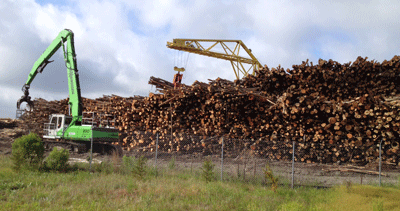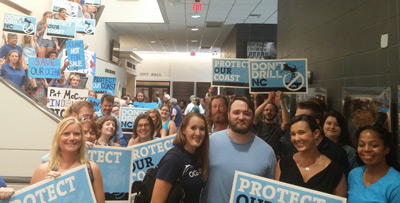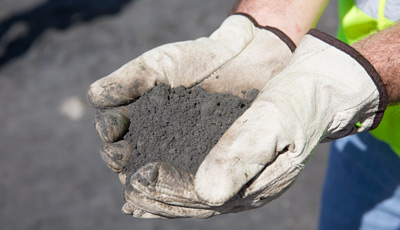SELC reports on results in 2015
The approach of New Year’s Day is always a time of reflection and, looking back, 2015 was a great year for our work in the Southeast.
Over the last few days we've shared SELC’s biggest results from the past twelve months, while looking forward to the important work we’ll tackle in the year ahead. It has been a stellar 2015 and we’re looking forward to an even better 2016.
Here's our 2015 results countdown!
#5. Powerline abandoned, gas plant reduced in western Carolinas

In the face of intense opposition from thousands of local citizens and organizations like SELC, Duke Energy has abandoned its proposal to route a 45-mile-long transmission line through the Southern Blue Ridge Escarpment in western North and South Carolina. The utility also scaled back its related proposal for an oversized gas-fired plant near Asheville.
There is still more to be done. SELC recently filed to intervene in the review for the proposed new power plants to ensure regulators include proper consideration of the region’s energy demand and maximizes consideration of cleaner, cost-effective alternatives such as energy efficiency and renewable energy.
#4. Correcting European biomass policy to protect Southeastern forests

In response to our strong body of evidence showing that European biomass policy is unintentionally causing bottomland hardwood forests to be clear-cut for pellets—and that burning our region’s wood for power will result in a fourfold increase in carbon emissions over the next 100 years, which is far worse than continuing to burn coal—the British government announced in mid-July that it would halt a significant financial subsidy for the use of biomass.
#3. Georgia buffer affects one-third of all salt marsh on the East Coast

This year marked a milestone for the Georgia coast with the passage of legislation permanently establishing a 25-foot coastal buffer. This vital measure will help protect one-third of all the salt marshes on the East Coast.
SELC is now pursuing a similar solution for Georgia’s freshwater marshes.
#2. 90+ coastal communities take a stand to protect our coast

When the federal government announced plans to open up the South Atlantic coast to offshore drilling, SELC sprang into action. Drilling not only raises the possibility of an environmentally catastrophic spill like the BP Deepwater Horizon, it brings high-intensity industrialization, threatening the tourism and fishing industries that are the economic backbone of our coast.
SELC marshaled its legal and scientific expertise to present a strong case to the Bureau of Ocean Energy Management during the initial evaluation period. We have also urged coastal communities, elected leaders, and local industries to join us in voicing their opposition. To date, more than 90 municipalities—including Wilmington, N.C., Charleston, S.C., and Myrtle Beach, S.C.—have passed formal resolutions against offshore drilling. The goal is for the Atlantic coast to be exempted in the revised plan, which is due in early 2016.
#1. Commitments to clean up 53 million tons of coal ash

There are leaking coal ash storage pits on nearly every major waterway in the Southeast. In direct response to our advocacy, a massive clean up is underway. In 2015, SELC’s legal team:
- completed cleanup agreements for all of South Carolina’s waterside coal ash lagoons.
- secured commitments for half of Duke Energy’s 14 sites across North Carolina and retained our right to represent citizens seeking to clean up the other seven sites.
- initiated proceedings at Tennessee Valley Authority’s Gallatin power plant outside Nashville that prompted the state to begin its own enforcement action and direct TVA to investigate all of its coal ash statewide. Most recently, SELC filed with the courts to ensure the state continues to pursue proper clean up of the coal ash, despite state efforts to delay.
- filed its first coal ash enforcement cases in Virginia.
The tally so far is 53 million tons of coal ash slated for cleanup, and counting.
Ongoing cases
SELC made significant progress on several other cases in 2015, and we anticipate continued progress in 2016. Below are some ongoing issues to watch next year.
- Defending the Clean Water Act
- Added protections for U.S. Forest Service lands
- Studies to inform management of Tennessee’s Harpeth River
- Local control of fracking ordinances
- Balancing harbor uses and historic preservation in Charleston
The milestones SELC achieves are not possible without the support of donors like you. SELC depends on charitable gifts from individuals, families, and foundations to fund our law and policy work, so please consider donating to SELC and help to protect the places you love in the Southeast.
